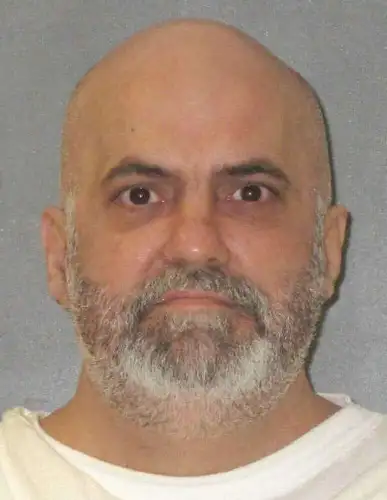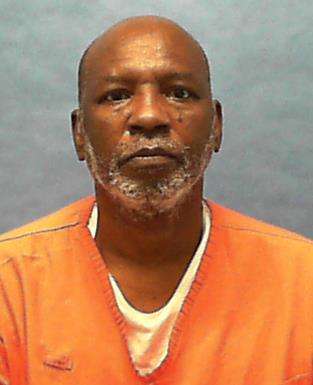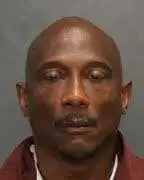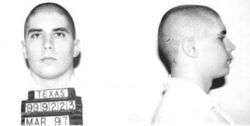James Elledge Executed For Eloise Fitzner Murder
James Elledge was executed by the State of Washington for the murder of Eloise Fitzner
According to court documents James Elledge would invite Eloise Fitzner and another woman out for dinner and they agreed to meet him at a church where he was employed. Elledge would give the women a tour until suddenly he would attack Eloise Fitzner who would be fatally stabbed to death. Elledge would take the other woman to a mobile home where she would be sexually assaulted and released the next day
James Elledge would be arrested, convicted and sentenced to death
James Elledge would be executed by lethal injection on August 28 2001
James Elledge Photos

James Elledge FAQ
When Was James Elledge Executed
James Elledge was executed on August 28 2001
James Elledge Case
James Elledge tried to kill himself twice after committing murder in 1998. Failing in both attempts, he asked a jury to let him die. It has taken longer than he wanted, but Elledge is getting his wish. He’s scheduled to be executed by lethal injection Aug. 28 for the murder of Eloise Fitzner.
Elledge would be the fourth person executed since the state reinstated its death penalty in 1981. And he would be the third who wanted to die, presenting no defense and refusing appeals. These are the so-called death penalty “volunteers,” who have taken the fastest and surest route to execution in Washington.
James Elledge didn’t let a jury hear mitigating facts in his case. The state Supreme Court has no legal problem with killers seeking execution. In all three cases, it ruled that mentally competent defendants are not required to put up a fight — because they have a fundamental right to direct their own defense.
But the issue raises concerns that death-penalty volunteers are short-circuiting a system meant to ensure that only the worst possible criminals face execution. “I think it’s frightfully dangerous that it’s happening, and, more importantly, I think it’s grotesquely irresponsible for the courts to allow it to happen,” said Thomas Hillier, director of the Federal Public Defender’s Office for the Western District of Washington. He said some killers are using the system to help themselves commit suicide. Triple-murderer Jeremy Sagastegui, he noted, claimed he committed his horrific crimes so the state would execute him. Sagastegui’s mother tried unsuccessfully to save his life, saying the jury should have heard evidence that he was mentally ill and had been abused as a child. Sagastegui was executed by lethal injection in 1998.
Triple-murderer Westley Allan Dodd, who was executed by hanging in 1993, also fought for a speedy execution for raping and killing three children. Elledge told his attorney not to present any reasons to spare his life, and the jury heard none.
Dodd and Sagastegui’s crimes were ghastly by any standards. Sagastegui was babysitting for Mellisa Sarbacher in November 1995 when he raped, stabbed and drowned her 3-year-old son, Kieven, and then shot Sarbacher and her friend, 26-year-old Lisa Vera-Acevedo when they returned home to Finley, a town southeast of Kennewick.
Dodd killed William Neer, 10; his 11-year-old brother, Cole; and 4-year-old Lee Iseli. Dodd, who had a record of pedophilia, pleaded guilty to stabbing the Neer brothers in a Vancouver park on Sept. 4, 1989, and strangling Iseli in Portland the following month. He raped one of the boys and sexually molested another.
But in Elledge’s case, attorneys argued unsuccessfully that the crime itself resembled many killings that do not earn the death penalty — but his death wish pushed the sentence over the edge. Prosecutors say Elledge’s criminal history, which included a 1974 murder, contributed to the decision.
A recent Seattle Post-Intelligencer examination of Elledge’s life showed that, although Elledge chose not to let the jury hear mitigating facts about his past, such facts did exist — such as records that Elledge had suffered from mental illness, or that he had once risked his life to save the life of a prison guard. The issue of “volunteer” defendants raises contentious questions among defense attorneys, who have no explicit national guidelines on where their obligations lie. Bob Mahler, a Seattle lawyer and former executive director of the North Carolina Death Penalty Resource Center, finds the volunteer issue troubling on several counts, saying that “the whole constitutional process is held hostage by one individual.”
The state’s argument that defendants have the ultimate right to direct their own defense doesn’t hold up, he said, because the Eighth Amendment to the U.S. Constitution compels the court system to treat death-penalty cases differently from other cases in all other respects. At the least, he thinks, independent attorneys should be appointed to seek out potential mitigating evidence for jurors to hear.
“The sentencer in Washington state is the jury, not the defendant. … Neither the defense lawyer in the case, nor the trial judge, should permit the defendant to usurp the jury’s critical function in these cases,” he said. Beyond that, the life or death decision in each case gets used later by the state Supreme Court when it conducts its mandatory review of whether each death sentence is proportional to cases where death is not imposed. “So one defendant’s refusal to present mitigating evidence ends up skewing the balance for others who come in his wake.”
http://seattlep-i.nwsource.com/local/33912_volunteers07.shtml






